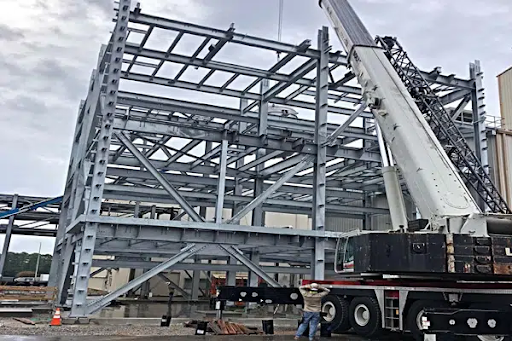
Steel fabrication plays a crucial role in today’s construction projects, offering numerous advantages that make it a preferred choice for structural needs. Whether it’s for building bridges, skyscrapers, or industrial facilities, the process of steel fabrication brings several benefits that ensure durability, efficiency, and cost-effectiveness.
Durability and Strength
One of the primary reasons steel fabrication is favored in structural projects is its exceptional durability and strength. Steel, known for its robustness, can withstand high pressures, heavy loads, and adverse weather conditions.
This durability ensures that structures made from steel can last for decades without significant maintenance needs, making it a reliable choice for long-term investments in infrastructure.
Precision Engineering
Steel fabrication involves precise engineering processes that ensure each component meets exact specifications. Technologies like Ultratech Stepper enable manufacturers to create intricate designs and shapes with high accuracy, crucial for complex structural elements.
This precision not only enhances the structural integrity of buildings and bridges but also facilitates faster assembly and installation on-site.
Cost Efficiency
Despite its initial investment, steel fabrication offers long-term cost savings. The durability of steel reduces the need for frequent repairs and replacements, cutting down maintenance costs over the lifespan of a structure.
Moreover, the efficiency in fabrication processes reduces labor costs and construction time, allowing projects to be completed more swiftly and within budget.
Environmental Benefits
Steel is a highly sustainable material choice for construction projects. It is recyclable, with a high percentage of steel being recycled globally. This reduces the environmental impact of construction by conserving natural resources and minimizing waste.
Additionally, steel fabrication processes have become increasingly energy-efficient, further reducing carbon emissions compared to other building materials.
Flexibility in Design
Architects and engineers favor steel fabrication for its flexibility in design. Steel can be molded into various shapes and sizes, accommodating complex architectural requirements without compromising strength. This versatility allows for creative freedom in designing iconic structures that stand out aesthetically while maintaining structural integrity.
Speed of Construction
Steel fabrication contributes to faster construction times compared to traditional building methods. Prefabricated steel components can be manufactured off-site concurrently with site preparation, minimizing on-site assembly time.
This accelerated construction schedule not only reduces labor costs but also allows projects to meet tight deadlines, essential in today’s fast-paced construction industry.
Safety and Reliability
Safety is paramount in construction, and steel fabrication ensures high standards of safety and reliability. Steel components are fabricated under controlled conditions, adhering to stringent quality control measures.
This reduces on-site risks associated with construction delays and ensures that structures meet regulatory safety standards, providing peace of mind to project stakeholders.
Conclusion
In conclusion, steel fabrication stands out as a superior choice for structural projects due to its durability, precision engineering, cost efficiency, environmental benefits, design flexibility, speed of construction, safety, and reliability. Technologies such as Ultratech Stepper enhance the fabrication process, allowing for intricate designs and efficient production of steel components.
As the construction industry continues to evolve, steel fabrication remains indispensable for building resilient and sustainable infrastructure that meets the demands of modern urban environments.







